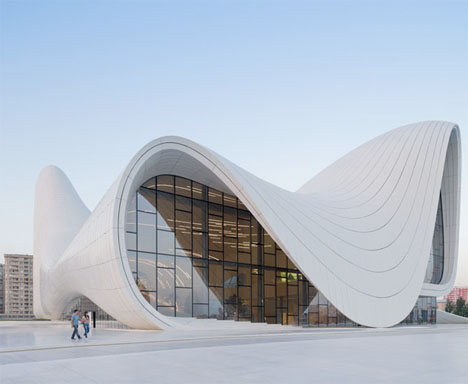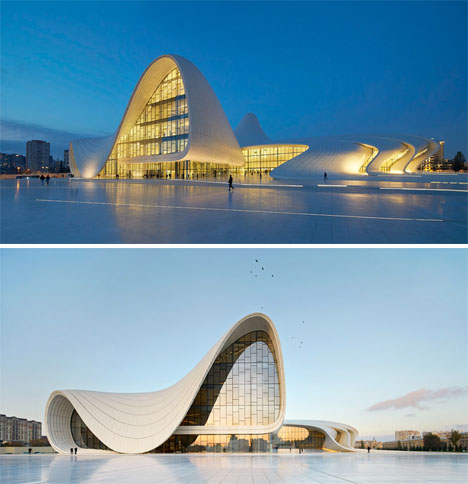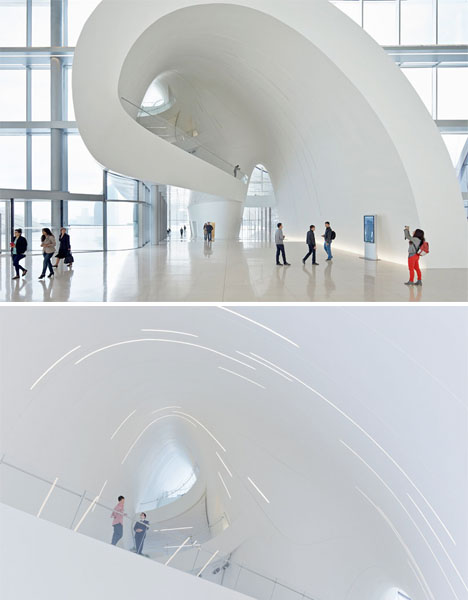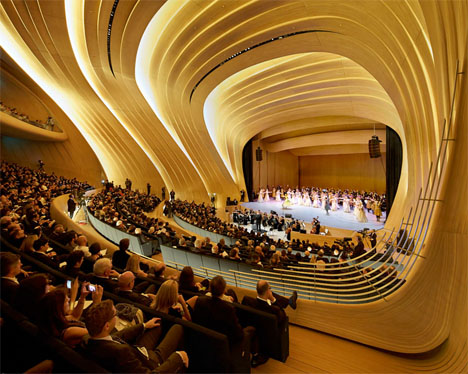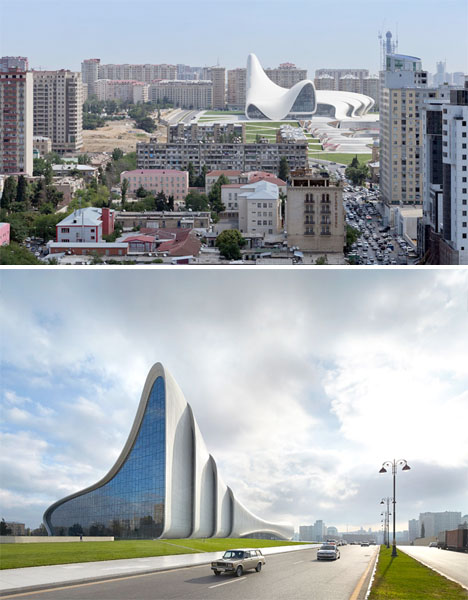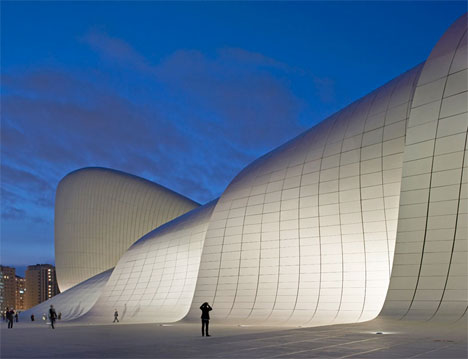Architect Zaha Hadid’s designs are graceful and sinuous, imbued with dance-like movement, and the new Heydar Aliyev Center in Azerbaijan is no exception. This landmark structure, which will host the former soviet nation’s cultural programs, swoops over itself in glossy white ribbons, looking as if it were stretched and pulled into place by human hands.
This malleability and the organic forms that inspired it forms a stark contrast to the traditional, historical Soviet architecture of the city of Baku. While not so well-known in the United States, this city stands at the forefront of architectural innovation as the Azerbaijan government spends an estimated $6 billion per year on new buildings. Other notable works of modern architecture in the city include the Flame Towers.
Hadid’s design is a modern interpretation of Islamic architecture as a composition of rows, grids, or sequences of columns that collectively form a non-hierarchal space. An architectural skin flows from the plaza up onto the roof of the first floor, and then rises several stories to form a shell-like canopy.
The clean, curving lines of the roof structure are already inviting passersby to ascend the roof, and it’s probably only a matter of time before skateboarders turn it into one big exhilarating playground.
